Healthy and delicious, tigernut milk, or horchata de chufa, is a refreshing drink that is very popular in the Valencian region of Spain. It’s also a nut-free, gluten-free, and lactose-free milk alternative.

While many Americans may not be familiar with tigernuts, here in my region of Spain they are the main ingredient in a very popular Spanish drink, horchata.
What is Horchata?
There are different versions of horchata served around the world, but the original version, horchata de chufa, originated many years ago in my part of Spain, the Valencian region. Horchata de chufa is basically a sweetened tigernut milk.
While the name horchata probably got its origin from the Latin word “hordeata” which comes from “hordeum”, or barley, there is a popular legend for how it may have gotten its name. In the legend, a king responds to a young woman who served him horchata, after tasting this delicious beverage, that it was “Or, xata.” (“Or” is the Valencian word for gold, and “xata” is an affectionate way to refer to someone, in this case the young woman who brought him the drink.)
Supermarkets sell the bottled stuff year-round, but the homemade artisan beverage is usually only available at ice cream parlors during the summer months. It’s normally served either as a very cold liquid beverage or in a slushy form.
While it originated here in Spain with the tigernut, other countries have made their own versions of horchata using rice, almonds, or other seeds or nuts.
Apart from being my favorite, tigernut horchata is arguably the healthiest of them all.
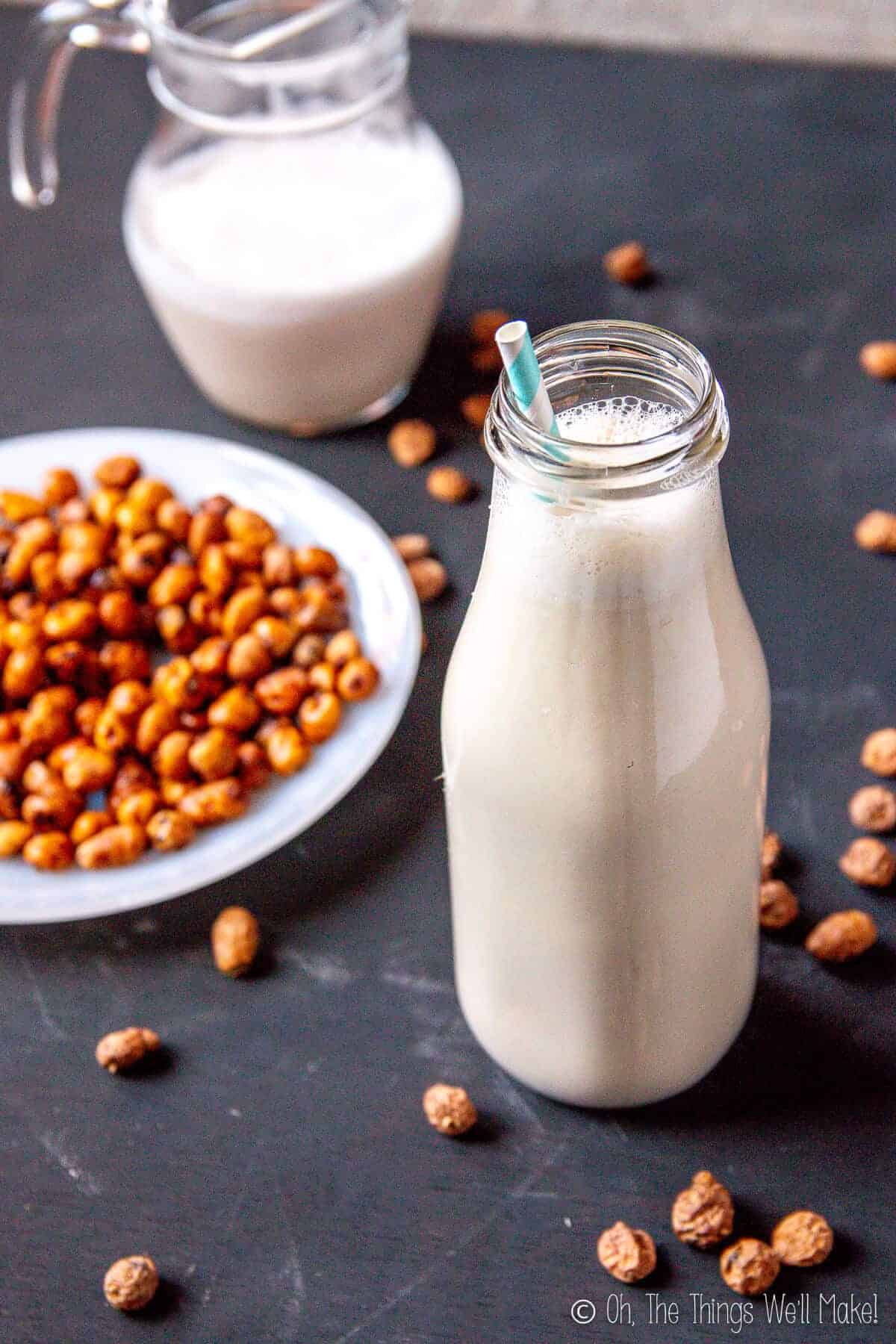
Why eat tigernuts?
Tigernut milk is a non-dairy milk alternative that is gluten free and nut free.
The tigernuts themselves gained popularity when the idea of resistant starches gained media attention. Tigernuts have high levels of resistant starches that may help feed gut-friendly bacteria and may help treat flatulence, indigestion, and diarrhea.
Resistant starches
Resistant starches are thought to have numerous health benefits. Not only do they fill you up, meaning you will likely take in less calories after consuming them, but they are also prebiotic meaning they help your body be able to more easily grow helpful probiotic bacteria. Plus, they may lower your LDL (sometimes known as the “bad” cholesterol) levels.
Other health benefits
Apart from resistant starches, tigernuts are also high in antioxidants, vitamins C and E, and minerals such as iron, potassium, and magnesium. You can even boost their antioxidant properties by germinating or roasting the tigernuts before eating them or making them into horchata.
Growing tigernuts
While they are called tigernuts in English, they aren’t nuts at all. They’re actually the tubers of a grass-like plant. (The plant isn’t a grass either, though. It’s known as a type of sedge.)
If you plant some tigernut tubers, you can grow the plant to see it for yourself. Some people plant it as food for their turkeys and other livestock.
If you choose to plant it, though, you should plant it in a contained environment. Maybe even consider only planting it in pots to be on the safe side. In some areas, it is considered to be a troublesome weed. It was even banned for sale in Michigan for that reason. (Perhaps things have changed?)
In one article, they made a distinction between the non-weed chufa and what they term yellow nutsedge, the problematic variety, but I haven’t really been able to find any information to support the idea that they are different. As far as I know, Cyperus esculentus is the variety that is used to make horchata de chufa here in Spain. (If anyone has more information on the subject, including the legalities of planting it, I’d love to hear about it!)
Ingredients
The most difficult part of making tigernut milk is probably getting your hands on the tigernuts.
Here in Spain, they are pretty common, but it’s still easier to find ready-made horchata than the tigernut tubers themselves. Any supermarket will likely have several varieties of horchata de chufa for sale. If you want to buy the chufas, though, you’ll likely have to visit a specialized store. I’ve seen them in health food stores and in places that specialize in selling nuts and dried fruits (normally stands in the central market and mobile food markets).
In other parts of the world where they aren’t as common, you may need to order chufas online.
Luckily, you should have the rest of the ingredients already. Apart from the chufas, this simple recipe really only needs cold water.
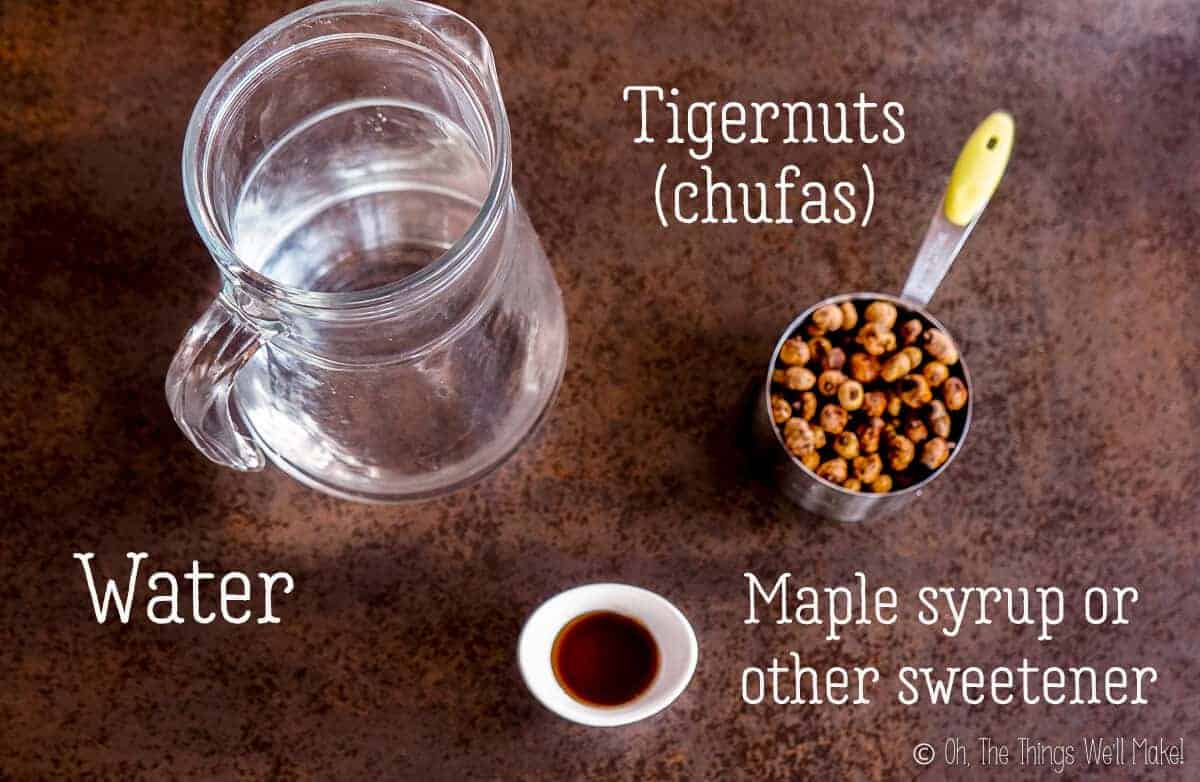
While unsweetened tigernut milk is already mildly sweet, most horchatas are sweetened with sugar, honey, or some other sweetener. You can optionally sweeten your tigernut milk with whatever sweetener you prefer using (or whatever you have on hand).
I usually use a few drops of stevia, but also used to sweeten it with maple syrup.
Traditionally, it’s sweetened with sugar, but I prefer to use unrefined sweeteners instead.
Making Tigernut milk
Making your own tigernut milk (or horchata de chufa) couldn’t be simpler. (It’s very similar to making your own coconut milk.)
Tigernuts are normally sold cleaned and dried, probably to prolong their shelf life. If you have obtained them from the plant, make sure they are fully clean before making horchata with them. Either way, rinse the tigernuts well and pre-soak them for several hours, or overnight, before trying to extract the milk from them. (8-12 hours is an ideal soaking time.) When you soak them in water, they will hydrate and somewhat increase in size.
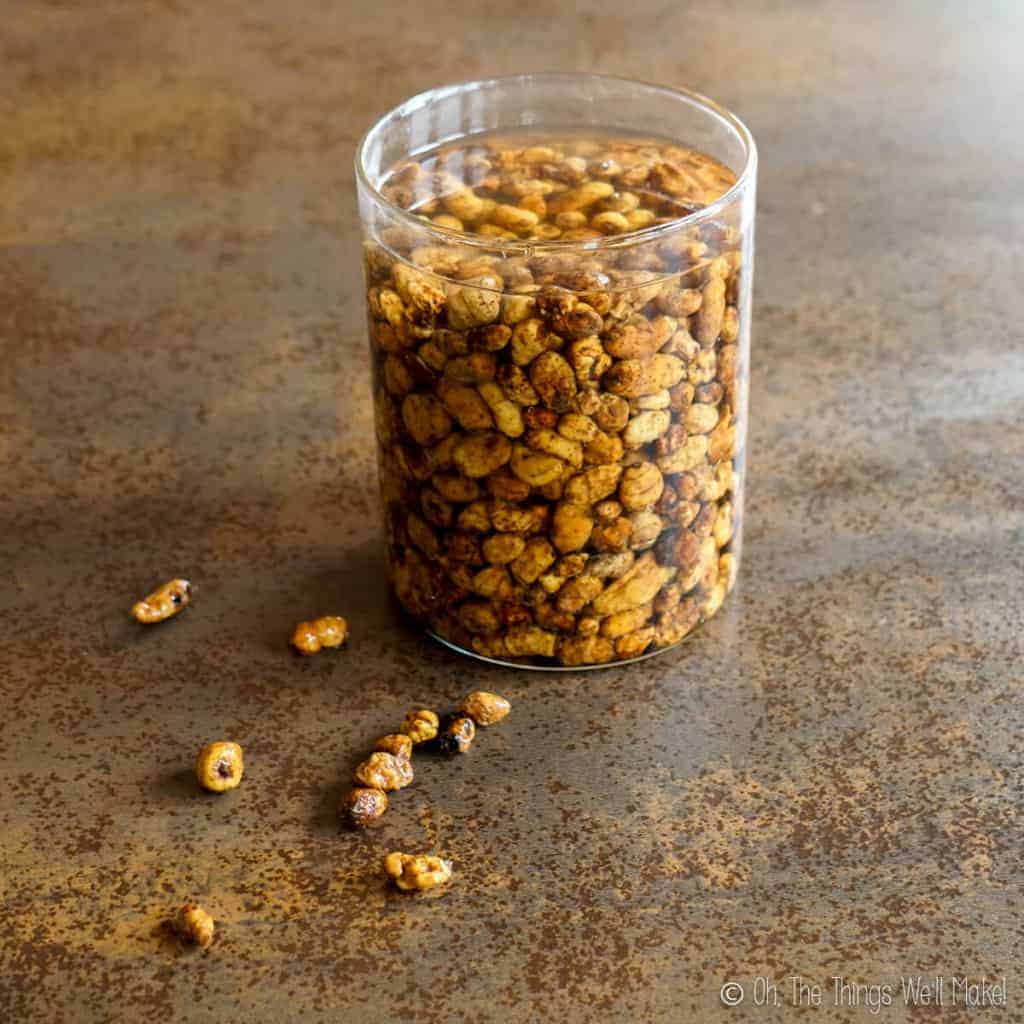
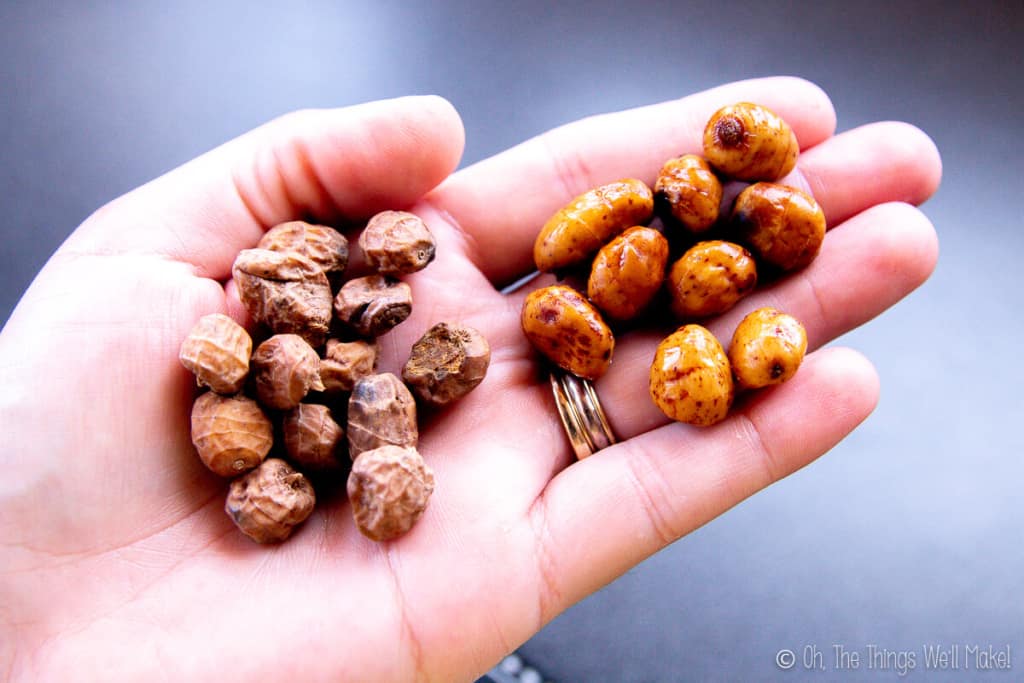
Dried vs hydrated chufas
Strain off the soaking water and place the hydrated chufas in a blender with some fresh, cold water.
Blend the hydrated chufas with the water. You can use either a regular blender or an immersion blender. If using an immersion blender, find a tall, narrow container in which you can easily blend the water and chufas together comfortably. You may need to separate some of the water out so that it all fits into the container.
Once you’ve blended the chufas and the water, strain the tigernut milk from the shredded pulp. To do so, you can either use a metal strainer, a special nut milk bag, or a cotton cloth. (There are also special nut milk makers that allow you to blend and easily strain out the pulp.)
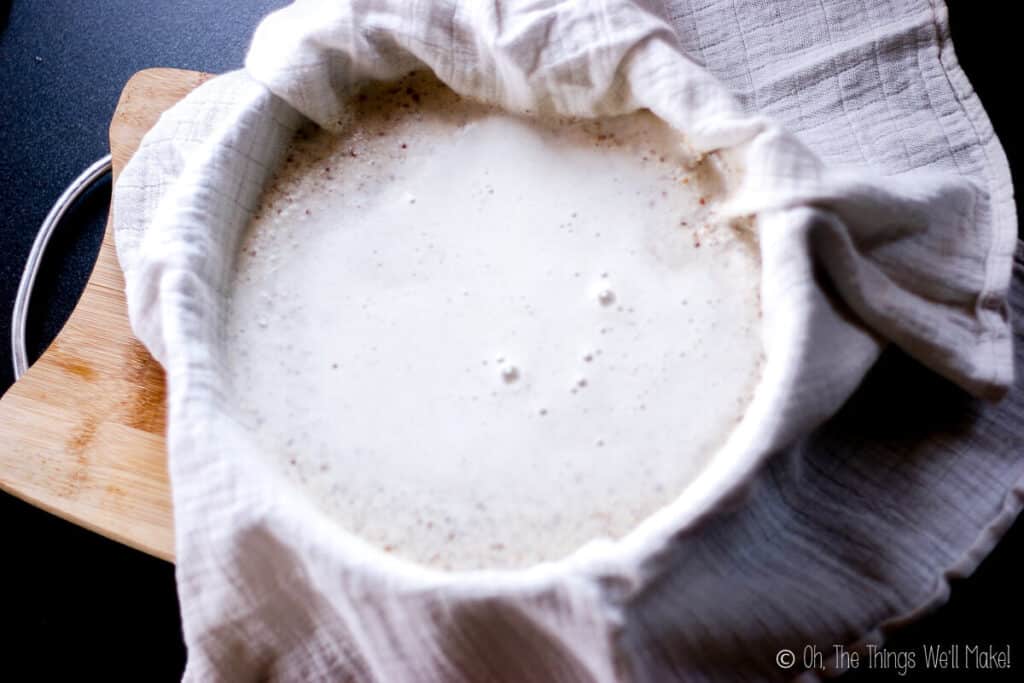
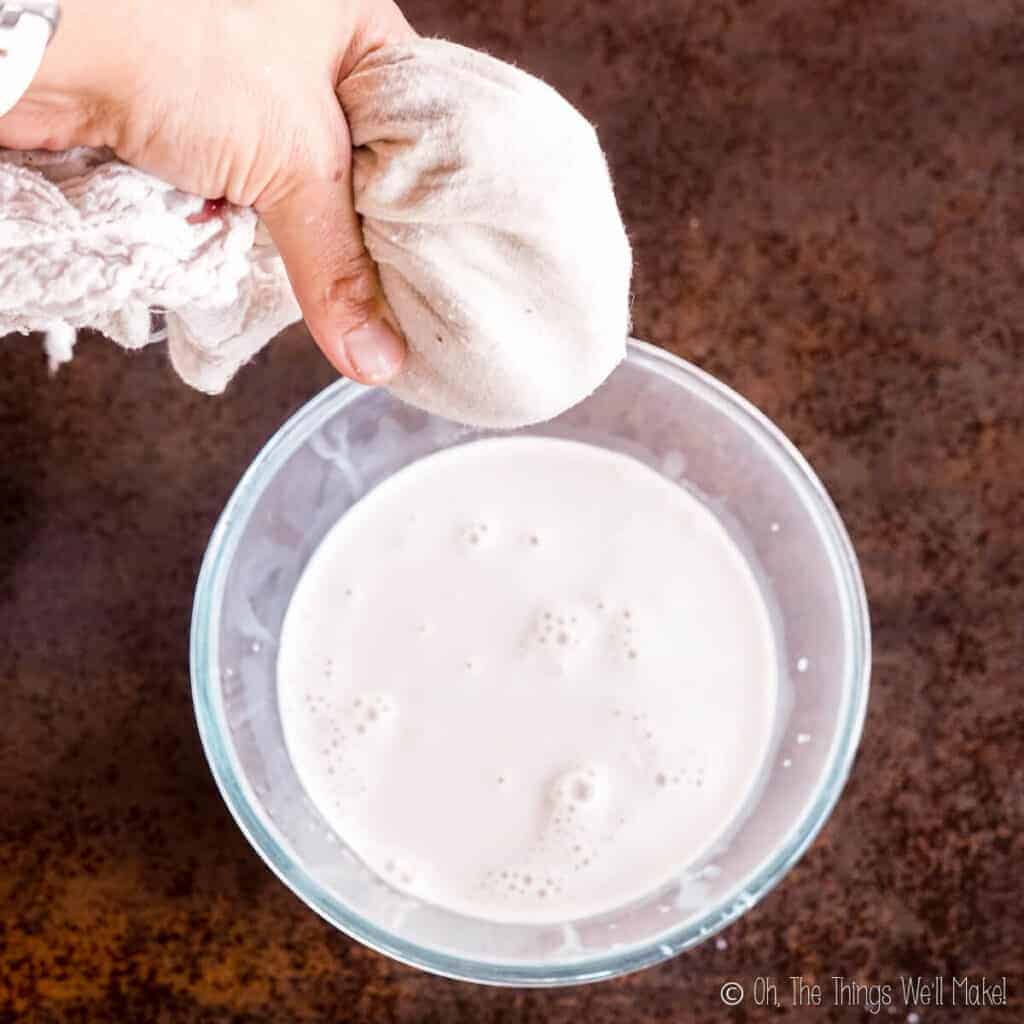
Straining with a cotton cloth. 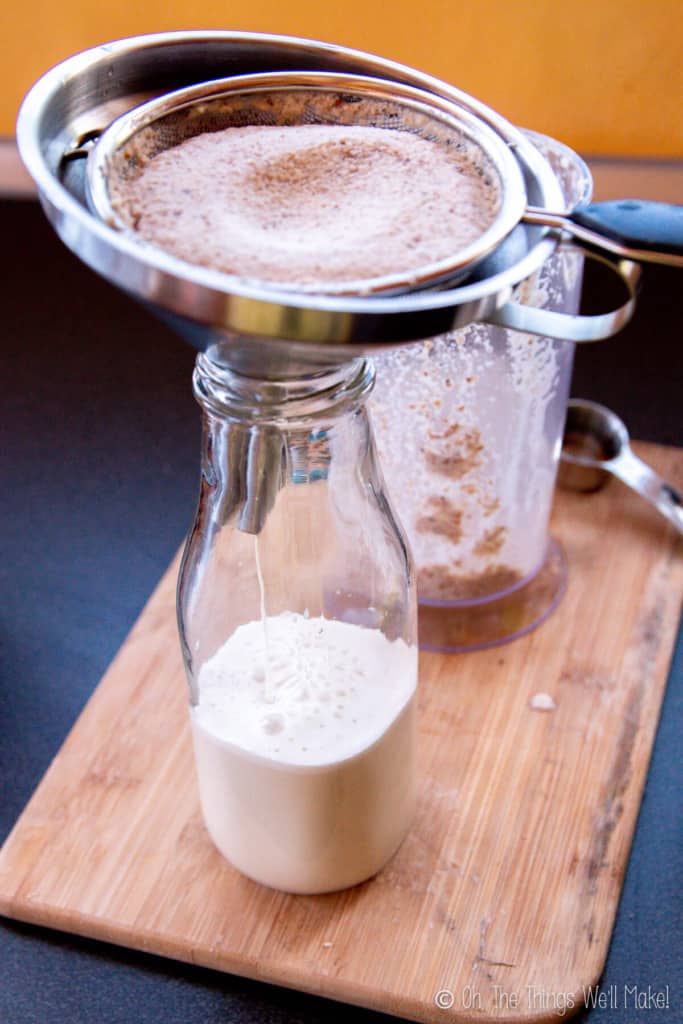
Straining with a metal strainer. 
Once strained, the tigernut milk can be optionally sweetened with stevia, honey, maple syrup, sugar, or whatever sweetener you prefer using.
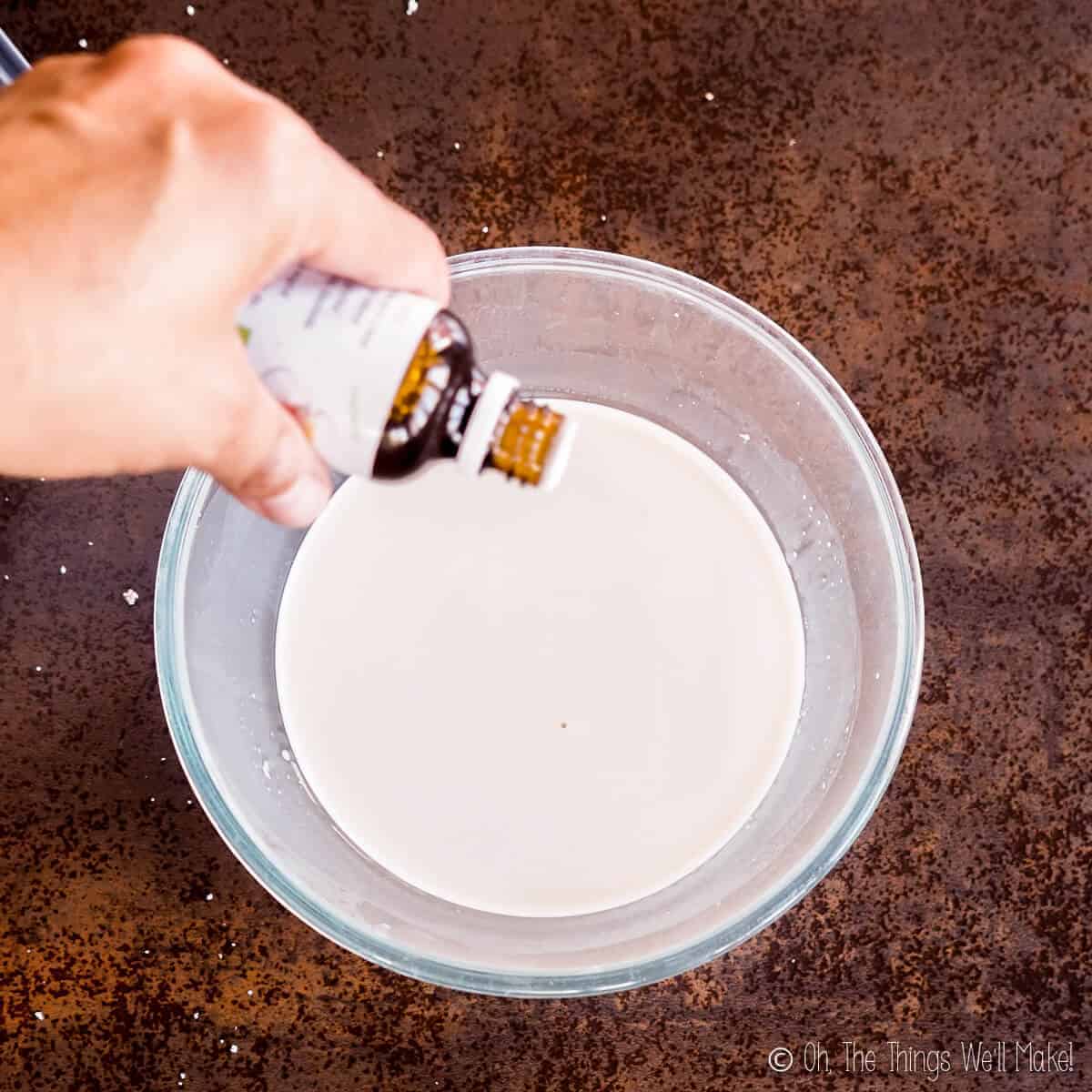
Horchata can be served immediately and should be served cold. To make a slushy version, blend the finished horchata with ice until you achieve the desired consistency.
Leftover horchata can be stored in the refrigerator for several days. With time, you’ll notice that some of the starches will sink to the bottom of the container. Shake the bottle vigorously to combine it as best you can before serving.
Expert tips
While this recipe is simple enough, there are a few things you can do to ensure that your horchata turns out great.
- If it’s warm out, soak the chufas in the fridge. Otherwise, they could sour and the horchata won’t taste as good or keep as well.
- Before blending the chufas, remove any bad ones that could alter the flavor. Bad chufas will float on top of the water after being soaked. Others may be very dark in color.
- To have hydrated tigernuts ready for whenever you want to make horchata, soak more tigernuts than you’ll need. Freeze the excess hydrated tigernuts until you are ready to use them.
Tigernut flour
While most people throw out the leftover tigernut pulp, I like to dehydrate it and then finely grind it into a tigernut flour.
Tigernut flour is a great grain-free flour alternative. Because the chufa is mildy sweet, it can add a mild sweetness to your baked goods, allowing you to slightly cut back on needed sweeteners. It also adds a slightly nutty flavor. While I don’t have any recipes using tigernut flour, I’ve used it in cookies and pancakes, normally combined with other flours like almond flour and/or coconut flour.
To make tigernut flour, dry out the pulp in a food dehydrator or on the lowest heat setting of your oven. Once it is completely dry, use a coffee grinder or a heavy-duty food processor to grind it into a fine, high fiber flour.
Video

Tigernut Horchata Recipe ( Tiger Nut Milk )
Ingredients
- 1 cup tigernuts rehydrated
- 4 cups water cold
- 1 Tbsp. maple syrup or other sweetener, to taste (optional)
Instructions
- Soak the tigernuts for 8-12 hours in enough water to more than completely cover them. If you are able to, change the water several times throughout the process to get rid of any impurities. Once rehydrated, they should plump up and their volume will grow slightly.
- Discard any bad tigernuts. That includes really dark tigernuts and those that remain floating on the surface of the water.
- Blend the tigenuts with the water for several minutes, until they have released a bright white vegetable milk. If using an immersion blender, you can separate out part of the water, blending them in a tall, narrow container with as much of the water as comfortably fits.
- Strain the liquid through a strainer into another container. You can also use a nut milk bag or a cotton cloth to strain out the liquid milk from the tigernut paste.
- If you've separated out some of the water, add the tigernut paste back into the blending container. Add in the rest of the water and continue to blend for another minute or so.
- Strain the liquid out once more, this time pressing out as much of the liquid as you can. You can use a spoon to press the pulp against the sieve or squeeze it through a cloth.
- The liquid that you have strained from the tigernuts is the tigernut horchata or tigernut milk. You can now optionally sweeten it, to taste, with some maple syrup or another sweetener of choice.
- To make a slushy horchata, blend the tigernut milk with some ice until it reaches the desired texture.
- Serve immediately.
Notes
This post was originally published on August 10, 2015. It was rewritten in April of 2021, adding new photos, videos, and clearer instructions.
 Español
Español


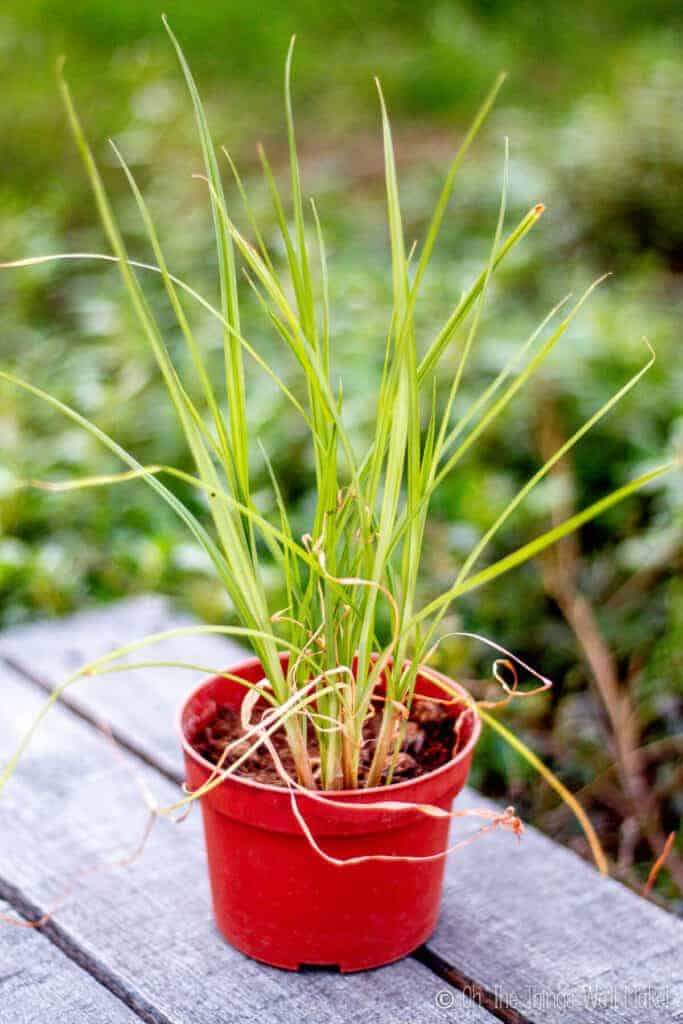
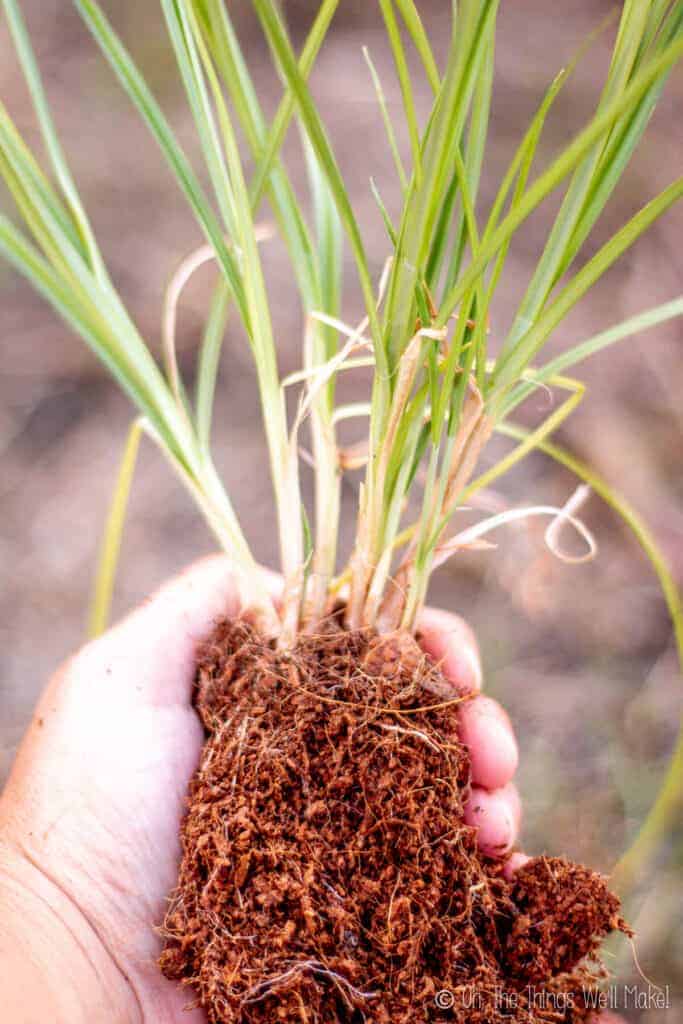
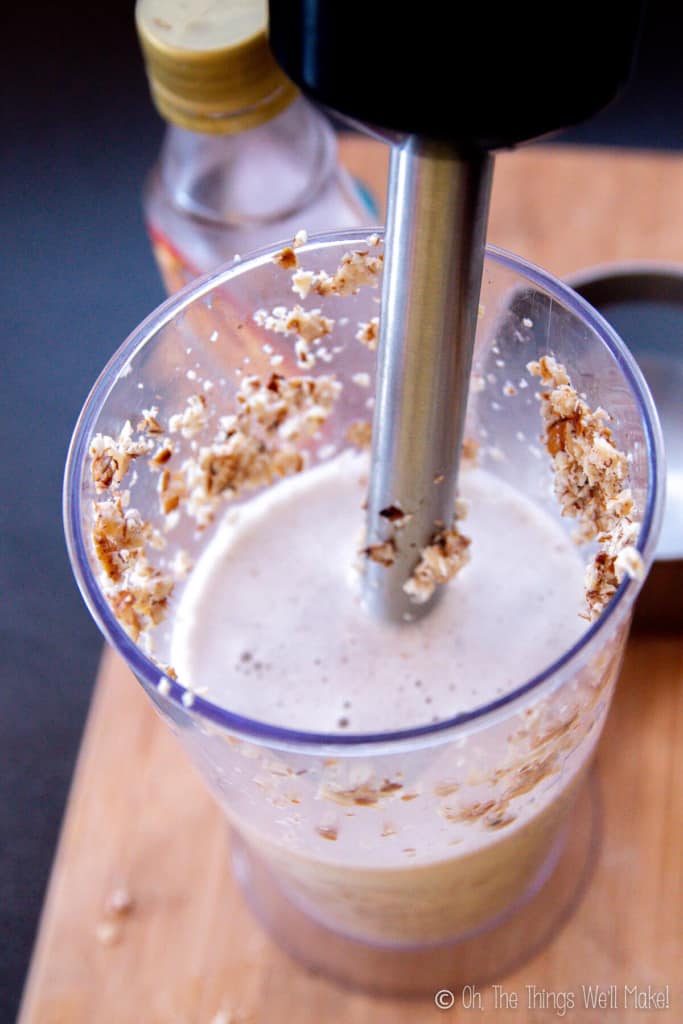
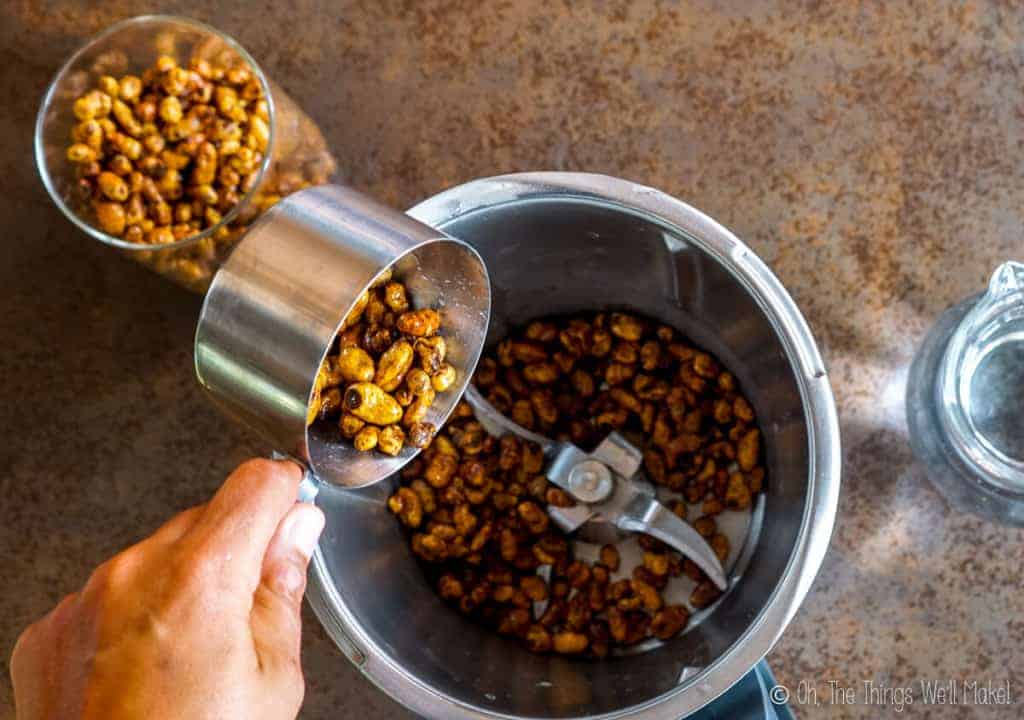
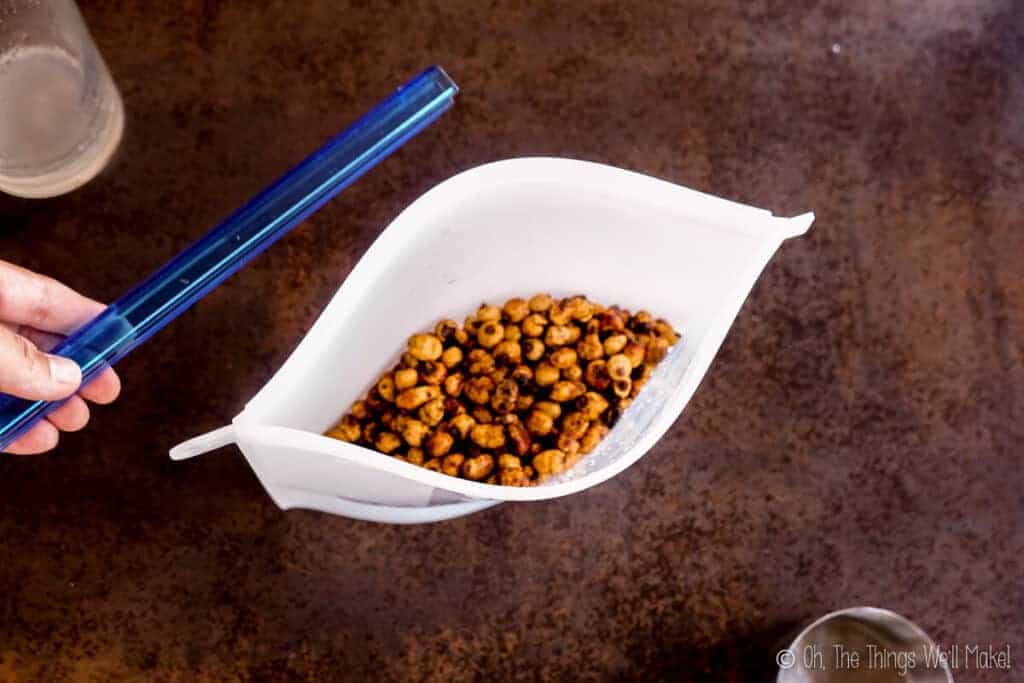
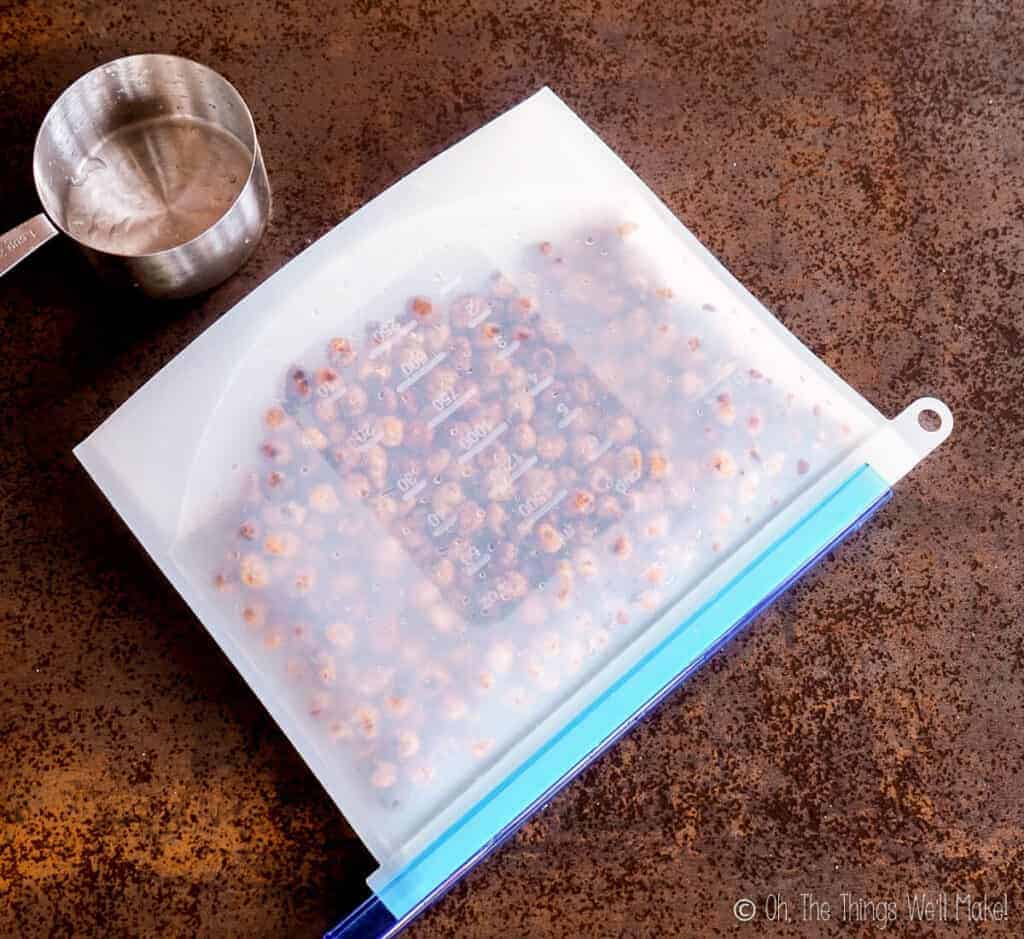
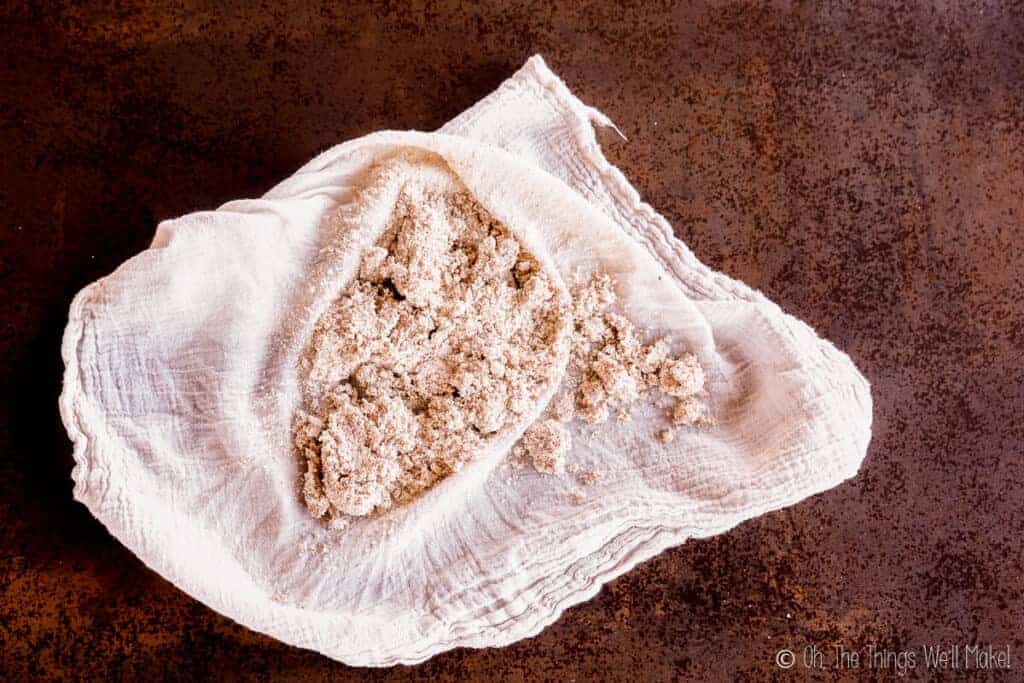
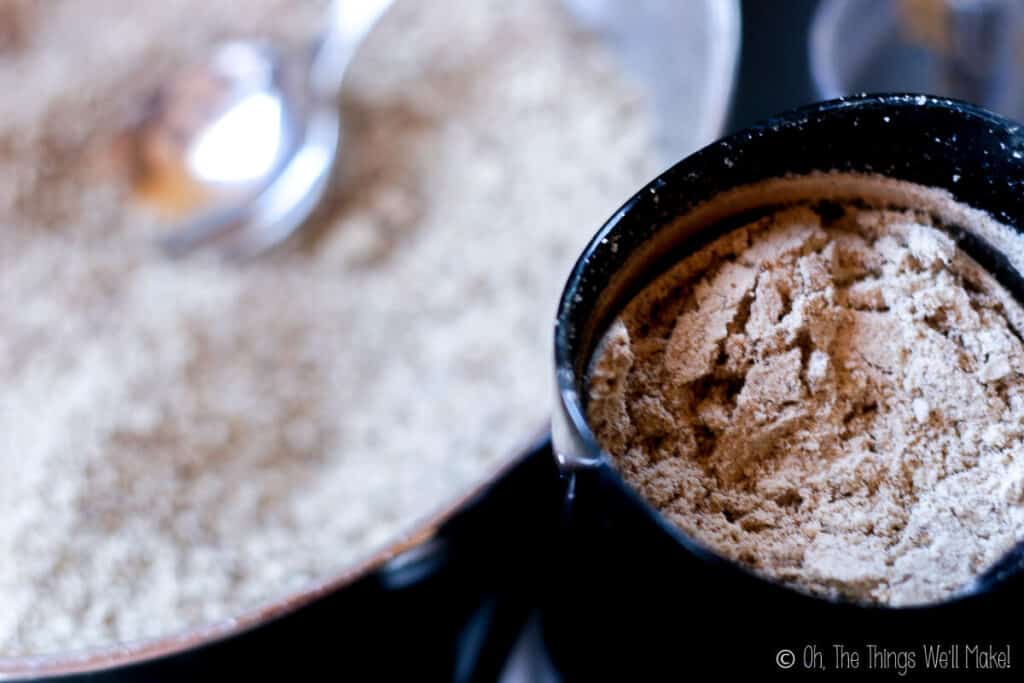
 Nourishing DIY Flaxseed Hair Gel
Nourishing DIY Flaxseed Hair Gel
gina
Can I make this recipe using Tiger Nuts that are flaked? My nephew sent me two huge bags of flaked Tiger nuts. I want to make something with them. What do you suggest?
Tracy Ariza, DDS
I’ve never seen or heard of “flaked” tiger nuts, but I’m assuming it’s just them already broken up. Yes, that should work fine. I’ve seen powdered tiger nuts here that work well. The only problem I see with them is that once they are broken up, they don’t keep as well, but if you’re going to use them right away and they were gifted to you, why not?
Nikki Uvieghara
it originated in north africa
Kat
Thanks for mentioning that the chufa “leftovers” from horchata can be dehydrated and milled into flour.
I came across your site because I was looking for ways to use what’s left, as it’s a shame to waste it. I tasted it, and the texture is similar to coconut so I could see it being used as a substitute but there aren’t many recipes.
Tracy Ariza
Hi Kat,
Yes, I should experiment more and try getting up some recipes. For now, I do kind of use it like I would coconut flour…
Sub it for part of another flour used in a recipe, but not too much so as not to affect the texture too much.
I’ve mixed it with fats like coconut oil and baked it into a sort of cookie of sorts too. 😉
If you come up with ideas, I’m all ears and happy to share them!
Aisha
Hi! Thanks for this amàzing info. Please I have a question. I’m thinking of milling my tigernut and storing them in an airtight bag. Can it last up to a year in an airtight bag? Looking forward to your favourable response.
Thank you.
Tracy Ariza
Hi Aisha,
I’m not sure how long they’ll keep once milled as I’ve never stored them that way.
My best guess is probably- at least keep well enough for using in horchata, but I’m really not sure. I’d think that they’d definitely keep longer before milling them.
In any case, try to get as much air out as possible and store in a cool, dark place for best storage. (Make sure humidity can’t get in too!)
Lydia
I´m from Valencia and now I´m living in Dublin. I´m lover of horchata de chufa, so, I bring to Dublin my own chufas (tiger nuts) from Valencia for to do my own horchata, and this recipe its very good. You can to try to add cinnamon too. If you freeze the horchata and then crushes with the blender, you will get horchata granizada and its…mmmm delicious!
Tracy Ariza
Hi Lydia,
Thanks so much!
Yes, I definitely agree with your serving suggestion! I love horchata granizada. (I also used to do the same with leche merengada until I realized that I didn’t tolerate milk very well.) 😉
I’ll try some cinnamon next time!
Blessing Stephen
hi… I do add coconut milk, ginger and date to my horchata drink.. pls would like to know the preservative to add to keep it fresh longer, aside cooling machine
Tracy Ariza, DDS
Hello,
I’m not sure. I don’t add preservatives to my food. I just try to make small batches and use it within a couple of days.
Zdenka
Hello! If you are in Dublin, look up Minimal Waste Grocery – they sell tiger nuts by weight! 🙂
Tracy Ariza
Thanks for the tip!
Norma Salcedo
Hi Traci. Thank you for your informative post and recipe. Would you happen to know if orxata de xufa can be made and sold in the U.S ? I ask because I know that xufa is regulated in Valencia?
Tracy Ariza
Hi Norma,
That’s an interesting question.
As far as I know, it isn’t that you can’t make and sell horchata outside of the Valencian region, but you can’t use their “denominación de orígen.”
It’s like when you buy wines. While you could make a wine in the US with the same grapes used to make a Rioja wine, you can’t call it a Rioja wine because it wasn’t made in the Rioja region of Spain.
I think the same goes with Champagne, which may take things a bit further. From what I remember reading, Spain’s cava uses the same process as champagne, but can’t be called as such because it isn’t made in the right region. You could make a balsamic vinegar, but not a vinegar di Modena or Kalamata olives, etc. Of course in those cases the names go along with the region.
In this case, other varieties of horchata are already made and sold outside of Spain. Mexico has it’s version made with rice, so I can’t imagine the term “horchata” itself could be off limits.
The chufa is called a chufa everywhere in Spanish, so saying that it is “horchata de chufa” doesn’t seem like it could be off limits either.
You definitely couldn’t call it Valencian horchata de chufa or horchata de chufa D.O. Valencia, but my best guess is that the rest would be fine.
All of that is, though, just that- my educated guess. I’m not a lawyer.
I would be interested in hearing anything you find that contradicts that, though.
Debbie
Chufa, i.e, tigernuts are the underground tubers of yellow nut sedge(Cyperus esculentus) & also grow wild in North America, especially in urban areas, but they are a bit of a pain to harvest. They were an important food source for native peoples & animals. You can get dried cultivated chufa nuts in health food stores, but as it is considered a “weed”, it is very easy to grow yourself- just be careful it doesn’t take over a field!
Tracy Ariza
Hi Debbie,
Yes, I saw that in my home state of Michigan, chufa is even prohibited because of its invasiveness!
I didn’t find it to be too hard to control when I planted a few, but perhaps it was because I was careful with it knowing that beforehand. 😉
I can imagine that they would be difficult to harvest in large enough numbers for making horchata. I only planted a few as a fun experiment.
Nancy | Plus Ate Six
I’ve heard of tiger nuts but didn’t realise what they actually were or what you did with them. I think you may have ‘discovered’ the next new superfood:) Your Horchata sounds like a very refreshing summer drink.
Tracy Ariza
Hi Nancy!
I actually love to snack on them when they have been soaking for several hours. I get seriously addicted to them like that, but they have a lot of fiber and that might turn some people off to them that way. That’s what makes horchata a great way to start using them. 🙂
I’ve loved it since I was a kid. It’s interesting to see how it’s regaining popularity outside of Spain lately.